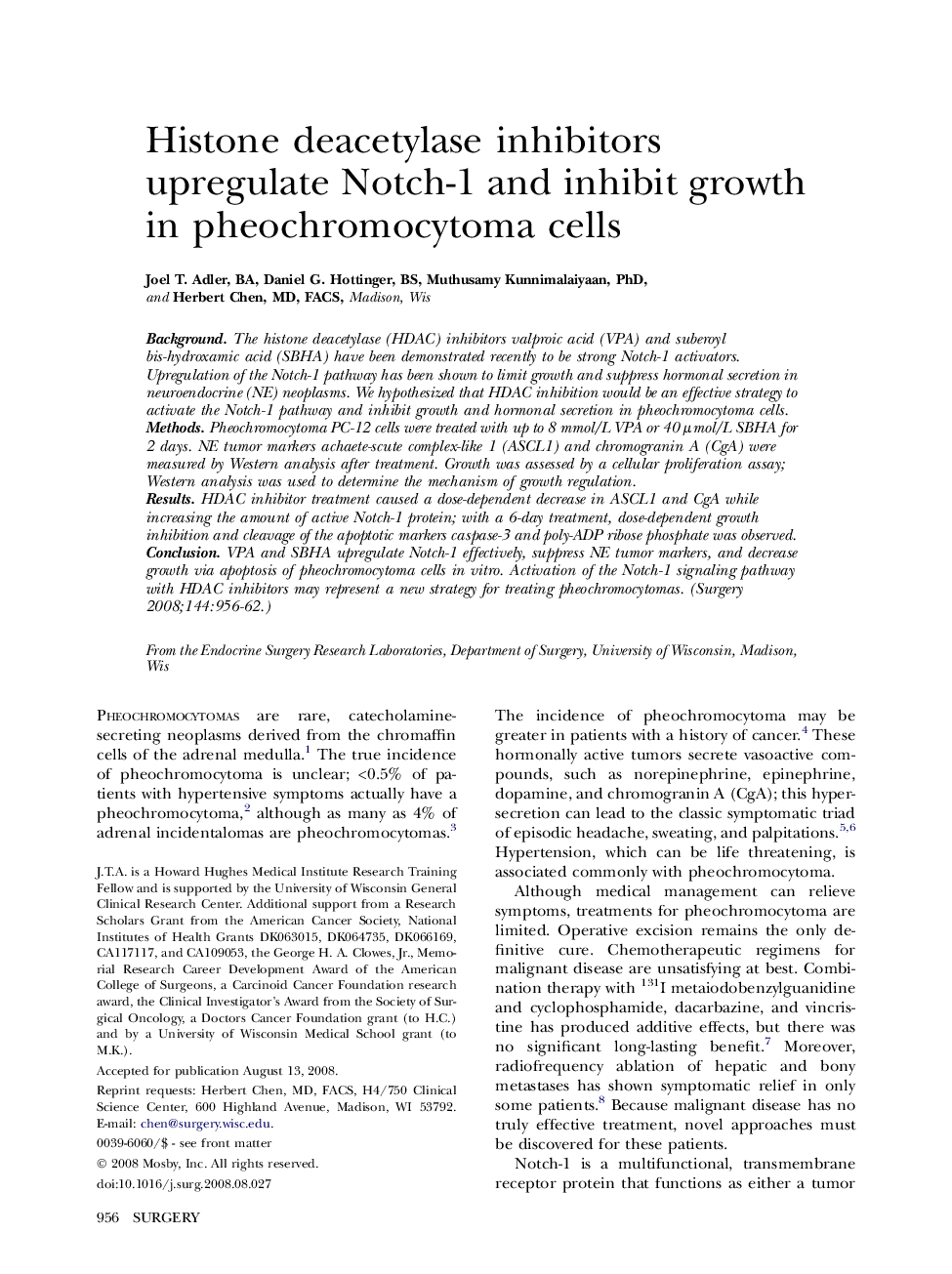| Article ID | Journal | Published Year | Pages | File Type |
|---|---|---|---|---|
| 4309323 | Surgery | 2008 | 7 Pages |
BackgroundThe histone deacetylase (HDAC) inhibitors valproic acid (VPA) and suberoyl bis-hydroxamic acid (SBHA) have been demonstrated recently to be strong Notch-1 activators. Upregulation of the Notch-1 pathway has been shown to limit growth and suppress hormonal secretion in neuroendocrine (NE) neoplasms. We hypothesized that HDAC inhibition would be an effective strategy to activate the Notch-1 pathway and inhibit growth and hormonal secretion in pheochromocytoma cells.MethodsPheochromocytoma PC-12 cells were treated with up to 8 mmol/L VPA or 40 μmol/L SBHA for 2 days. NE tumor markers achaete-scute complex-like 1 (ASCL1) and chromogranin A (CgA) were measured by Western analysis after treatment. Growth was assessed by a cellular proliferation assay; Western analysis was used to determine the mechanism of growth regulation.ResultsHDAC inhibitor treatment caused a dose-dependent decrease in ASCL1 and CgA while increasing the amount of active Notch-1 protein; with a 6-day treatment, dose-dependent growth inhibition and cleavage of the apoptotic markers caspase-3 and poly-ADP ribose phosphate was observed.ConclusionVPA and SBHA upregulate Notch-1 effectively, suppress NE tumor markers, and decrease growth via apoptosis of pheochromocytoma cells in vitro. Activation of the Notch-1 signaling pathway with HDAC inhibitors may represent a new strategy for treating pheochromocytomas.
